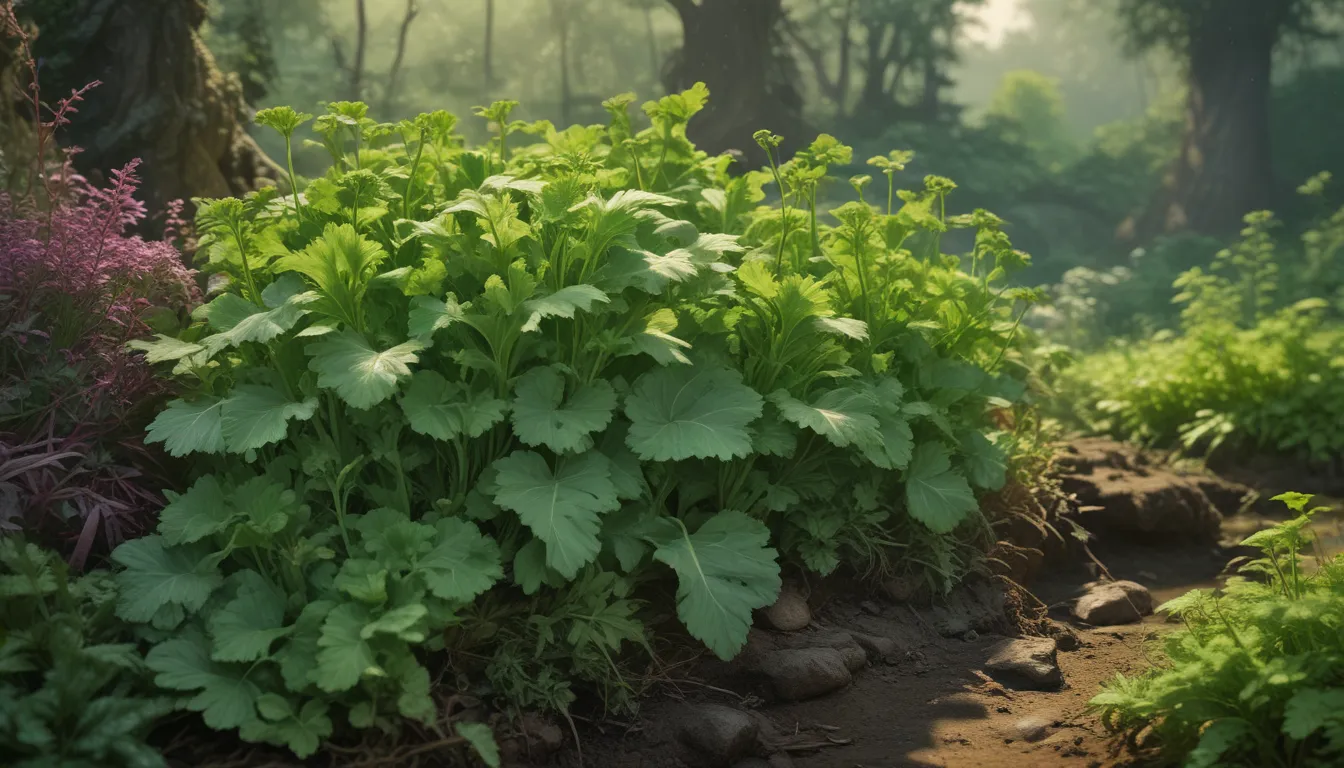A Complete Guide to Growing Mizuna Asian Mustard Greens in Your Garden

Are you ready to embark on a journey into the world of mizuna, the flavorful and fast-growing Asian mustard green? Whether you are a seasoned gardener or just starting out, this leafy vegetable offers a host of benefits that are sure to make it a favorite in your garden. In this comprehensive guide, we will explore everything you need to know about cultivating this nutritious and versatile plant.
Getting to Know Mizuna
Before we dive into the nitty-gritty of growing mizuna, it is essential to understand what sets this plant apart. Mizuna, scientifically known as Brassica rapa var. japonica, is a descendant of turnips, but with a distinct sweet and mild flavor. Its feathery leaves are perfect for quick cooking methods like steaming or stir-frying, making it a popular choice for salads and other dishes.
Originating in China and cultivated for centuries in Japan, mizuna is also known as “kyona,” which translates to “greens from Kyoto.” Its tender nature makes it a common component in spring mixes and mesclun due to its extended resistance to bolting compared to other brassicas and lettuce varieties.
Planting Mizuna
Here are some tips for sowing mizuna seeds in your garden:
- Mizuna thrives in cool weather, with optimal temperature ranging from 45 to 75°F.
- Choose a sunny or partially shaded spot with well-draining soil for planting.
- Plant seeds about four weeks before the last frost date in your area.
- Avoid planting in an area that has grown other brassica relatives like arugula, broccoli, or radishes in the past two seasons.
- Thinly sow seeds a quarter of an inch deep, spacing clusters every four inches in rows about a foot apart.
- Alternatively, scatter seeds over the surface of the bed or in bands spaced four to six inches apart and cover with a thin layer of soil.
- Water consistently to ensure rapid growth, providing about an inch of water per week.
- Harvest baby leaves once the seedlings reach two inches tall, and mature leaves when they are four to eight inches long.
By following these planting guidelines, you can ensure a bountiful harvest of fresh and flavorful mizuna greens in your garden.
Caring for Your Mizuna Plants
To help your mizuna thrive, follow these essential growing tips:
- Thin seedlings to stand four inches apart to promote proper growth.
- Keep the garden bed free of weeds by mulching or regular weeding.
- Water plants at the soil level to prevent leaf diseases.
- Provide consistent watering to ensure plants receive about an inch of water per week.
- Maintain adequate spacing between plants to allow for proper air circulation and prevent fungal infections.
- Harvest leaves regularly to encourage new growth and prevent bolting.
By following these care tips, you can enjoy a healthy and abundant harvest of mizuna throughout the growing season.
Popular Cultivars of Mizuna
While mizuna seeds may not be as commonly available as other greens, they are worth seeking out for their unique flavor and versatility. Here are some popular cultivars of mizuna to consider for your garden:
- Mizuna: The classic green variety, with open-pollinated seeds readily available.
- Central Red: A hybrid variety with narrow, deeply serrated foliage and brilliant purple stems.
- Lime Streaks: A mounded baby leaf in a vibrant lime green color, perfect for edible landscaping.
- Miz America: A bolt-resistant cultivar with a beautiful shade of red and upright growth habit.
- Red Streaks: A striking magenta and cream-colored Asian green that tolerates heat well.
These cultivars offer a range of colors, flavors, and growth habits to suit your gardening preferences and culinary needs.
Managing Pests and Disease
Despite its tender nature, mizuna may attract pests and diseases common to brassicas. Here are some common pests and diseases to watch out for:
- Aphids: These piercing insects can cause leaf damage if left unchecked. Control with insecticidal soap or remove affected plants.
- Cabbage Loopers: The larvae of these moths can chew holes in leaves, particularly in the fall. Use row covers to prevent infestation.
- Flea Beetles: Small, jumping beetles that can damage leaves. Use floating row covers or plant in the fall to avoid infestation.
- Slugs: Lively pests that feed on leaves at night. Handpick or use diatomaceous earth to deter slugs from your plants.
Prevent common diseases like anthracnose, bacterial leaf spot, and downy mildew by providing proper spacing, watering at the soil level, and sourcing high-quality seeds. Swift action is essential if plants show signs of disease to prevent further spread.
Harvesting and Preserving Mizuna
Harvest mizuna leaves as soon as they reach a desirable size to ensure the best flavor and texture. Pick baby leaves for salads and wraps, and mature leaves for stir-fries and soups. To extend the shelf life of harvested leaves, blanch and freeze them for later use, or pickle them for a tangy addition to dishes and condiments.
Recipes and Cooking Ideas
Get creative with mizuna by incorporating it into a variety of recipes and dishes. Use baby leaves in salads, wraps, and smoothies, or chop mature leaves for stir-fries, soups, and pickles. Experiment with different cooking methods to showcase the unique flavor of this Asian green, from sauteing to steaming. Share your favorite mizuna recipes and cooking tips to inspire others in the community.
Conclusion
Mizuna is a versatile and flavorful Asian mustard green that is easy to grow and harvest in your garden. By following these planting, care, and harvesting tips, you can enjoy a steady supply of fresh mizuna greens throughout the growing season. Experiment with different cultivars, recipes, and cooking methods to discover new ways to incorporate this nutritious vegetable into your meals. Whether you are a novice gardener or a seasoned cook, mizuna offers endless possibilities for culinary creativity and garden enjoyment.
Remember to share your experiences, recipes, and tips with the community to inspire others on their mizuna-growing journey. Happy gardening and happy cooking with mizuna!





